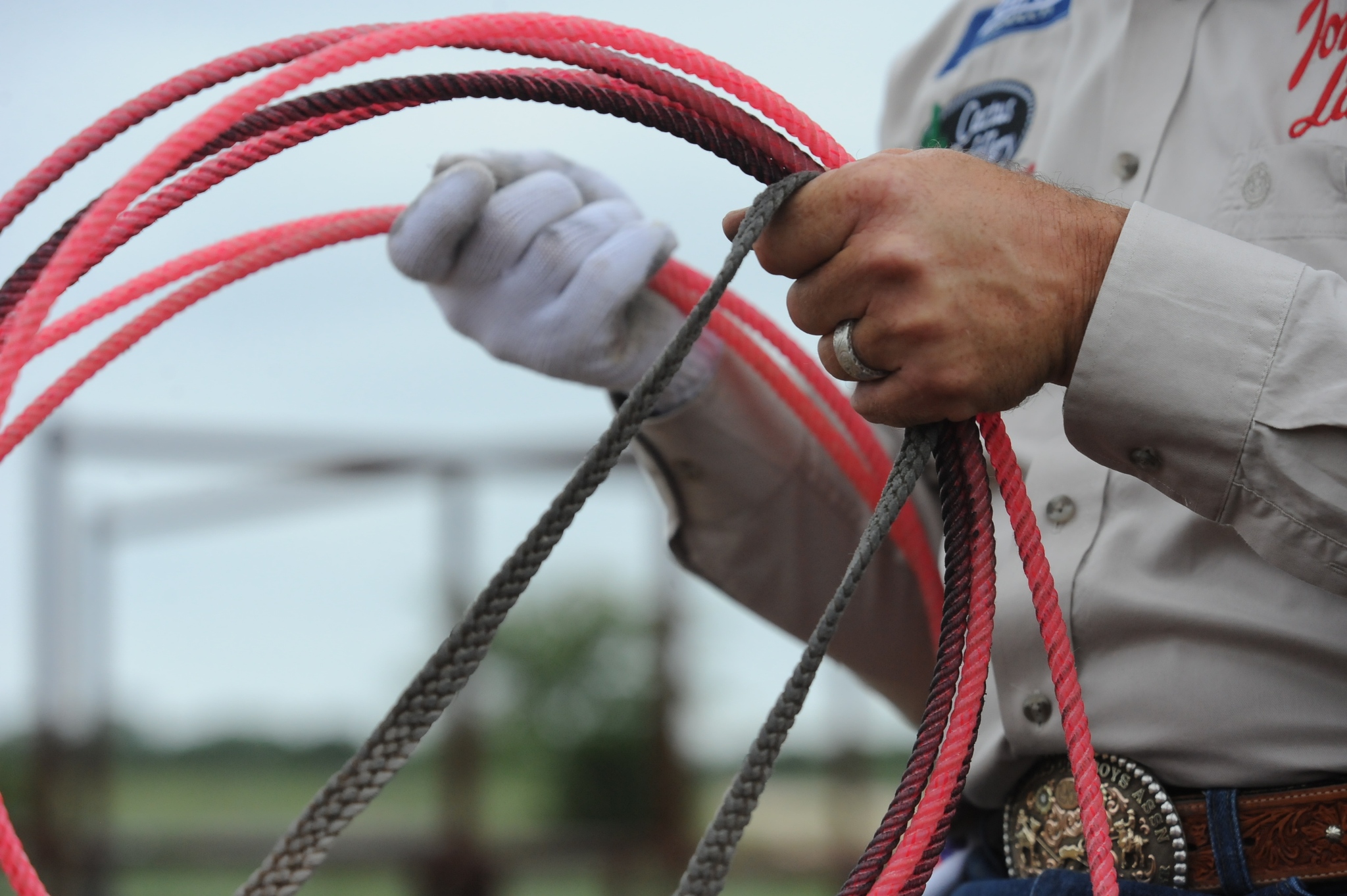Everybody develops his or her own style of roping and horsemanship, and one area of many in which everyone is an individual is the bridle reins. It’s an important area for me, because a big part of my control of my horse in the rodeo arena comes from my reins. There are different aspects to this that I’ve developed over the years. I not only prefer certain reins over others, but I have different horsemanship techniques in which I hold my reins and different lengths of reins I use from horse to horse. These small adjustments all play a part in my roping in the rodeo arena.
As far as using the bridle reins, I like them to be a certain length-long enough to where the way I hold my reins in my left hand allows me an excess loop that folds over and out of the way. That way, if a horse stumbled or tripped real bad there would be enough rein there to where it wouldn’t completely jerk the reins out of my hand.
KEEP READING:
To have a good grip on my bridle reins, I hold them all the way up through my hand and then split my little finger through the right rein. I hold the left rein with all four of my fingers and my thumb up through the palm of my hand for a good, sturdy grip. That way, if something happens-like a steer falls right in front of me-I have a strong grip with my hand on the reins.
Depending on the horse I’m riding and the bridle I’m using, I will adjust the reins according to the type of balance and control I want in my horse. Sometimes I ride with my reins even, other times my left rein’s a little shorter and even sometimes my right rein’s a little shorter.
When I first started riding Ike, he needed a lot of flexing to the left with a shorter left rein, because he had a tendency to want to drop across the corner with a real hard move. But after five or six years of riding him with a shorter left rein and developing that flexibility, he sometimes would get tipped and off balance with his head turned when the jerk came, so he wasn’t able to be as strong as he could be if his head and hind end were straight and squared up. I started using more even reins after that to help stabilize him in the jerk.
Where I hold on to my reins stays pretty consistent from horse to horse. I like to have my hand in a position where I’ve got a horse pretty short, so when I pick that horse up my hand isn’t in my chest area. I like to have my left hand down and out of the way, so it doesn’t affect my swing. With my hand in that position, it doesn’t have to move much to get the maneuvers accomplished.
I prefer a bridle rein that’s cut pretty flat and thin, because of the way I hold my reins-looped together in my hand with the excess over the top. I have to hold my coils in that hand, too, so I don’t like bulky reins. I like a pretty narrow, thin rein.
HERE’S MORE:
The Process of How We Learn with Clay O’Brien Cooper
Ensure Your Practice Isn’t Going Out the Window with Clay O’Brien Cooper
Some horses need a shorter left rein and foot pressure on that side to keep their head, neck and body shaped in the corner. I like a horse that’s pretty flexible, so just riding one around I’m always flexing him and using my feet to keep him that way. How that horse makes the corner and gets into the ground to stop determines my rein measurements on either side. I want to keep my horse gathered up and together, and using different lengths of reins can help you do that.
I like my reins to be adjustable on both sides and with snaps on the ends. It can be totally secure on the right side of the bridle, but I at least want a snap on the left side so I can wrap the rein around a pole. I don’t want a horse to tear up the bridle if he does pull back. I also like to keep my reins in good, soft, pliable shape and not hard, cracked and ready to break in two.
A lot of my reins have snaps at both ends, which allows me to switch my reins from bridle to bridle. All a guy really needs is two or three sets of reins if they have snaps on them. I have 20 bridles, but I don’t need 20 sets of reins.
One reason I started having my reins a certain length is because Ike sometimes sets back when I tie him up. So I got in the habit of never tying him up at the rodeos. I’d just loop the reins over the saddle horn, so I didn’t have to tie him up. I learned that if I unsnapped one end and tied him up, other people would see a loose rein on the ground and tie him up. I ended up with some broken headstalls over that.
Every roper develops his or her own likes and dislikes about the reins, including what type he uses, the length, how he holds them, etc…Everything I do with my reins is for a specific reason. That makes me pretty particular about them.
The only reins I absolutely can’t use are the rolled, round ones. I guess I’ve had enough hard-mouthed horses over the years, and it hurts your fingers to really take ahold of one with a round rein. Plus, it feels pretty bulky and unnatural to me to have my coils and big, round reins in my hand.











